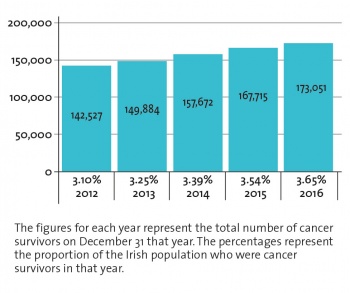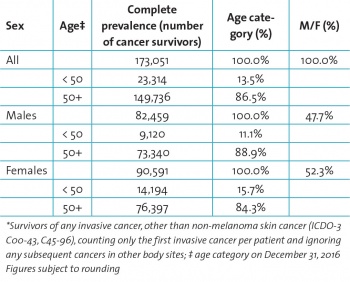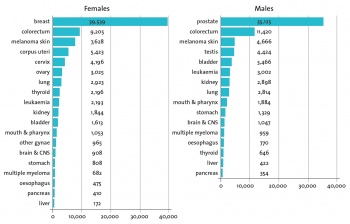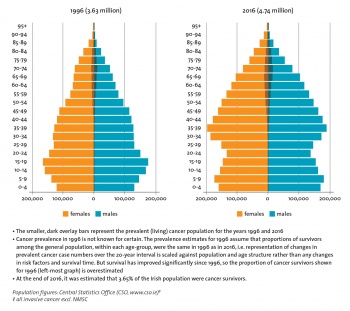CANCER
Cancer trends in Ireland: How many cancer survivors are there?
The National Cancer Registry was established by the Minister for Health in 1991
February 1, 2019
-
It has been collecting comprehensive cancer information for the Republic of Ireland since 1994. The information collected is used in research into the causes of cancer, in education and information programmes, and in the planning of cancer services to deliver the best cancer care to the whole population.
The National Cancer Registry (NCRI) reached a milestone in its history last year, as 2018 was its 25th year of data collection. Over this time the registry has observed an increase in number of cancers diagnosed and significant improvements in survival. Completeness of case ascertainment at five years after diagnosis is estimated to be at least 98%.1 Incidence data are collected and coded by the NCRI according to the ICDO3 classification.2
Complete cancer prevalence is defined as the number of persons surviving with, or following a diagnosis of, cancer in a given population at a particular point in time – the index date. Cancer prevalence increases as new diagnoses are made and decreases as people previously diagnosed die. Therefore, prevalence is a useful statistic to measure the impact on the health service over the long-term. For a cancer registry, fixed-duration prevalence is the number of cancer survivors calculated directly from observed data collected by the cancer registry since it was established.
The NCRI began national collation of cancer registration in 1994 and it currently holds 23 years of complete incidence and follow-up information on cancer cases, up to the end of 2016. However, there remains a hidden subset of cancer patients alive at the end of 2016 who were not included in NCRI data because they were diagnosed before 1994.
It has been estimated that a cancer registry must be in existence for about 50 years before limited duration prevalence approximates to complete prevalence.3 Complete prevalence can be estimated in various ways.3 We have adapted a log-linear regression method (prevalence count as a function of time since diagnosis) to extend limited duration prevalence to estimate complete prevalence.4,5 This is considered a pragmatic approach which considers prevalence as an isolated statistic dependent on the dynamic interactions between historic incidence, mortality and survival data.
Figure 1 shows that new cancer cases increased in line with the growing (and ageing) population from about 12,300 in 1994 to 21,700 in 2015. Mortality also increased to a lesser extent, from about 7,400 in 1994 to 8,800 in 2015. With increasing incident cases and a lesser increase in cancer deaths, the proportion that survived five years after diagnosis increased incrementally over time, from about 43% during 1994-1998 to 53% during 2010-2014.
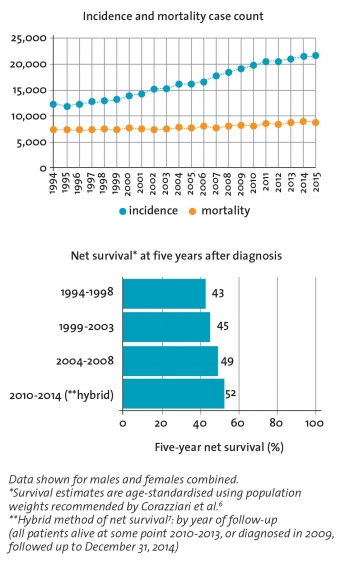 Figure 1: Trends in cancer incidence, mortality and survival: all invasive cancers, excluding NMSC (C00-43, C45-96): 1994-2015(click to enlarge)
Figure 1: Trends in cancer incidence, mortality and survival: all invasive cancers, excluding NMSC (C00-43, C45-96): 1994-2015(click to enlarge)

